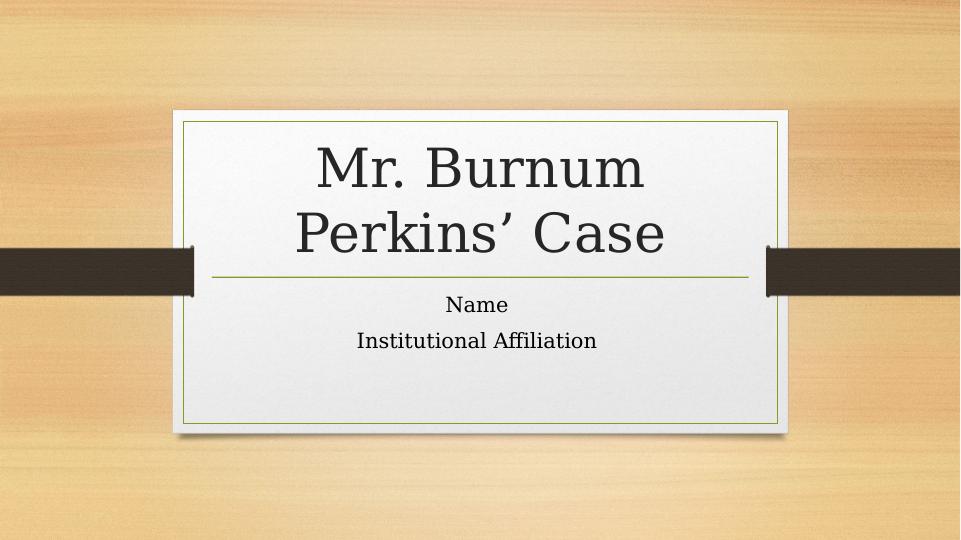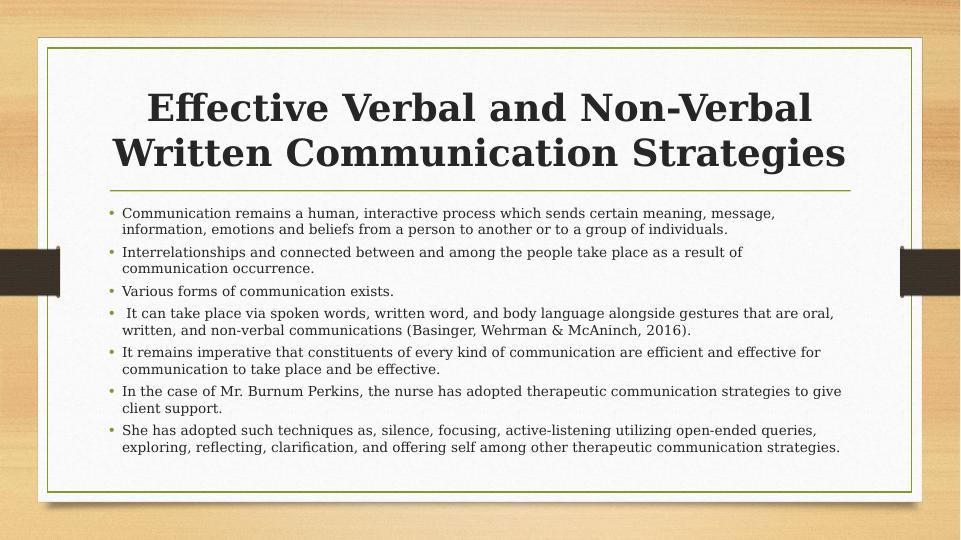Effective Verbal and Non-Verbal Communication Strategies for Nurses
Clarification of expectations for Assignment 2, which involves preparing and delivering an 8-minute oral presentation on effective communication strategies in nursing progress notes.
12 Pages1505 Words33 Views
Added on 2023-03-21
About This Document
This presentation discusses the most effective verbal and non-verbal communication strategies for nurses to ensure effective patient care and transition. It also explores the use of grief and loss communication framework in patient care.
Effective Verbal and Non-Verbal Communication Strategies for Nurses
Clarification of expectations for Assignment 2, which involves preparing and delivering an 8-minute oral presentation on effective communication strategies in nursing progress notes.
Added on 2023-03-21
ShareRelated Documents
End of preview
Want to access all the pages? Upload your documents or become a member.
Effective Verbal and Non-Verbal Communication Strategies for Mr. Burnum
|7
|1607
|30
Effective Verbal and Non-Verbal Communication Strategies in Nursing
|16
|1253
|42
Significance of Therapeutic Communication Skills in IPC Practice
|9
|1799
|317
Therapeutic Communication Skills and Inter-Professional Collaboration in Nursing
|8
|1847
|470
Importance of Therapeutic Communication in Nursing
|12
|2785
|90
Therapeutic Alliance | Nursing
|6
|1282
|23




